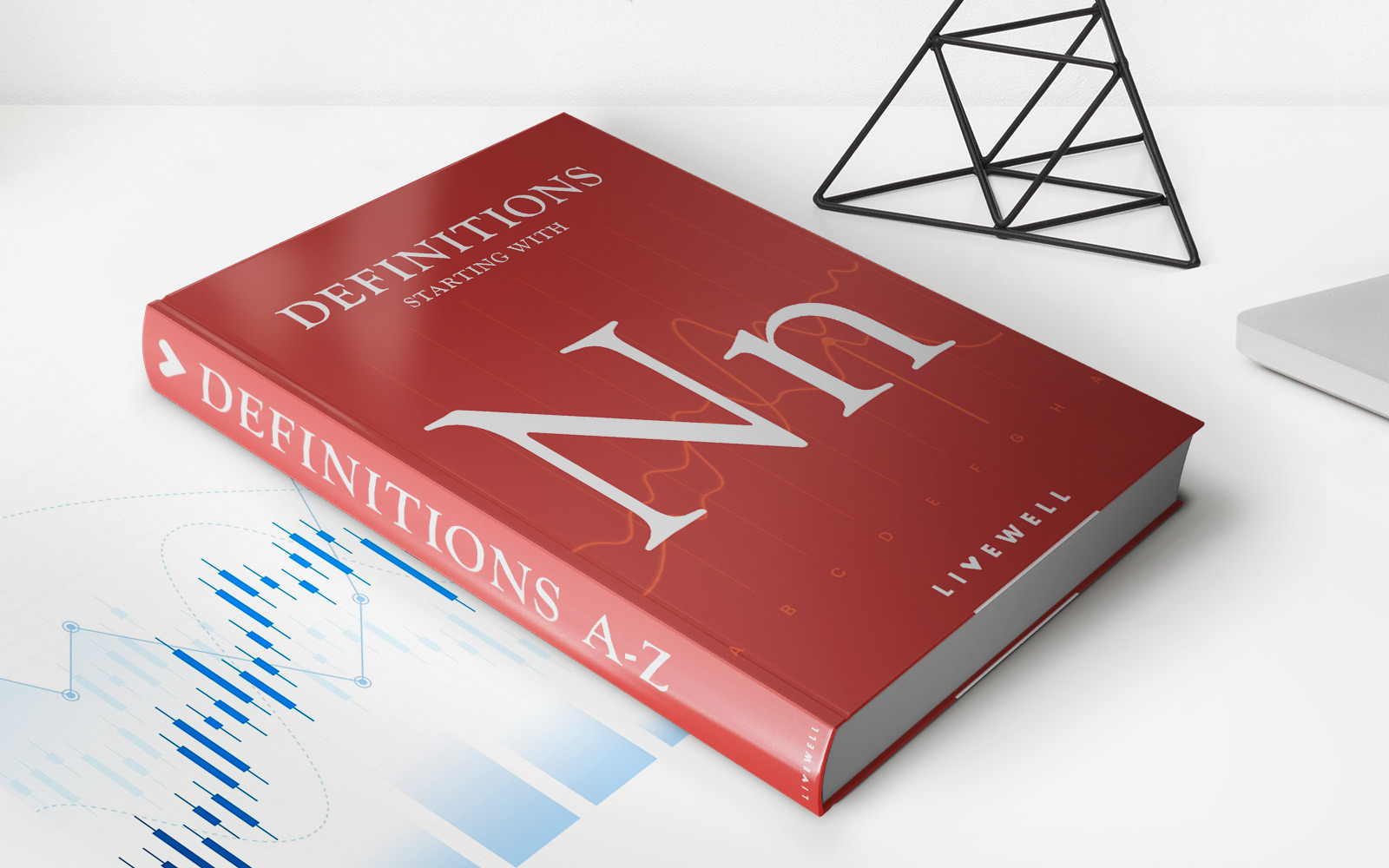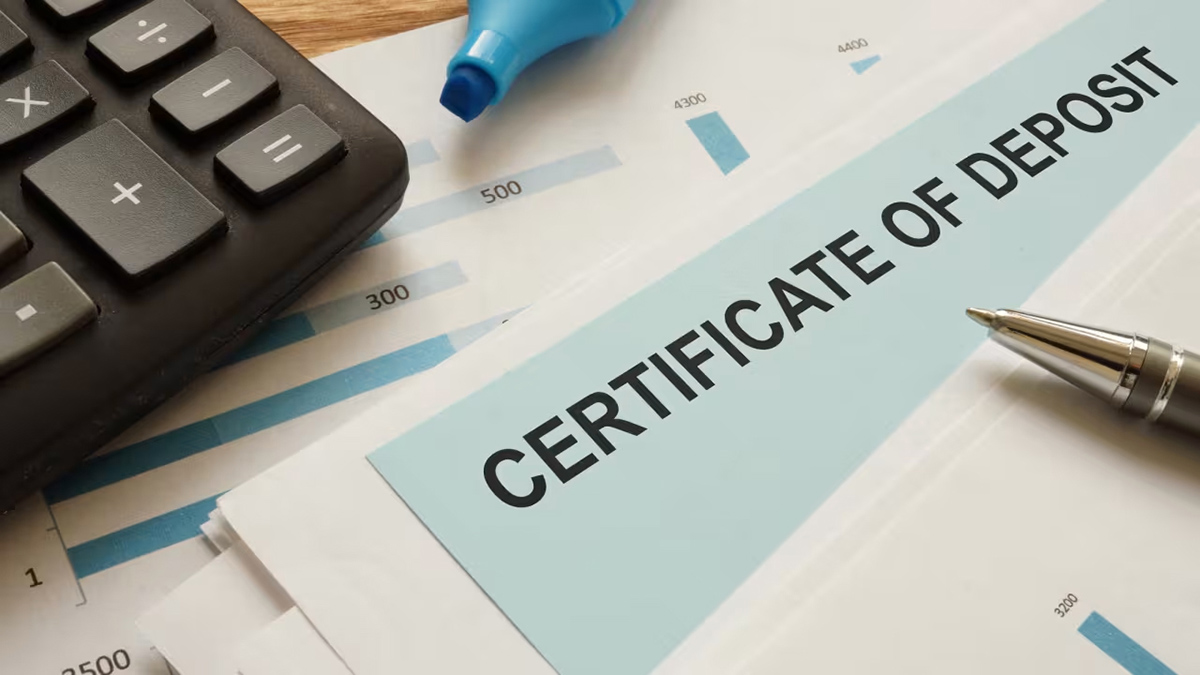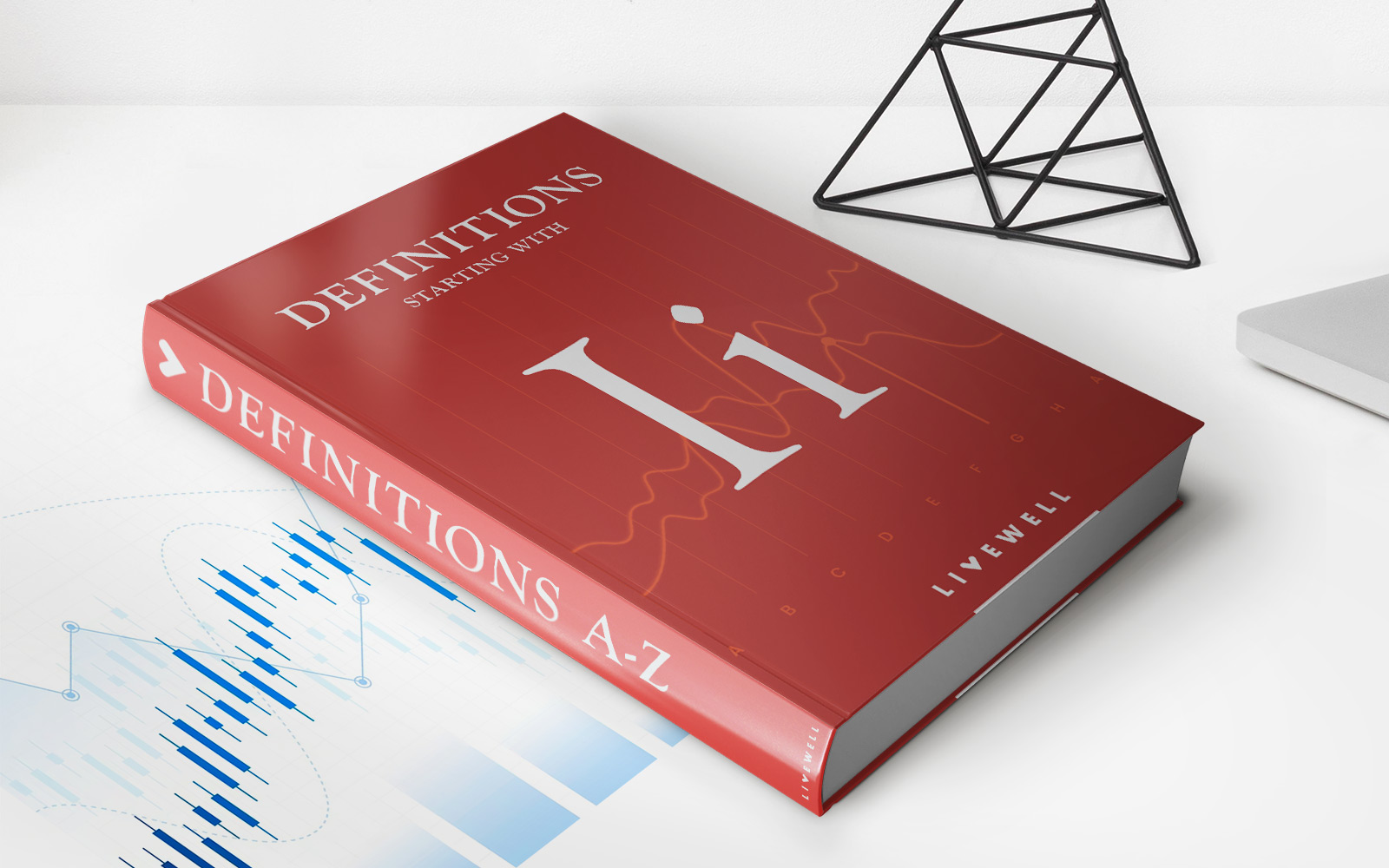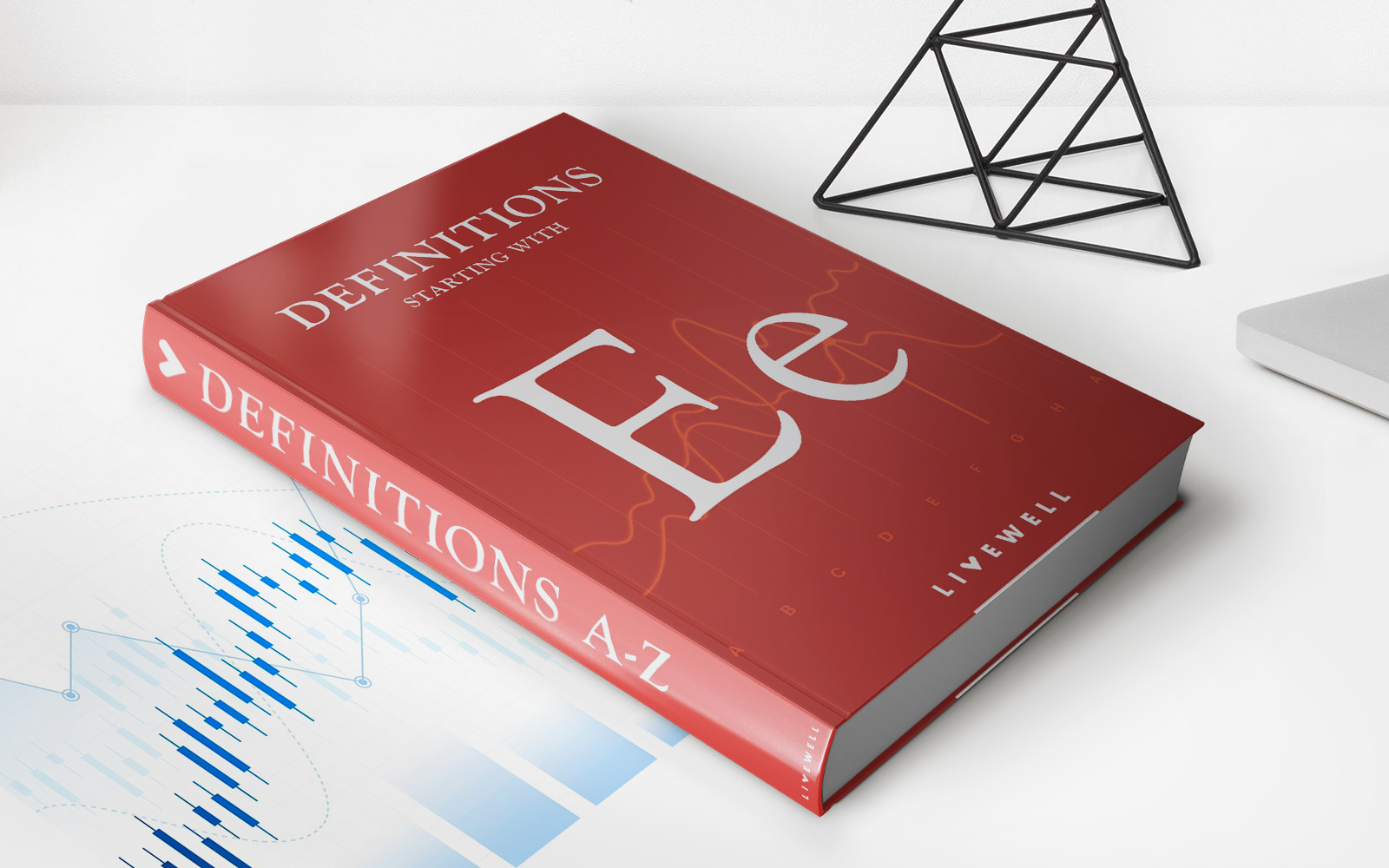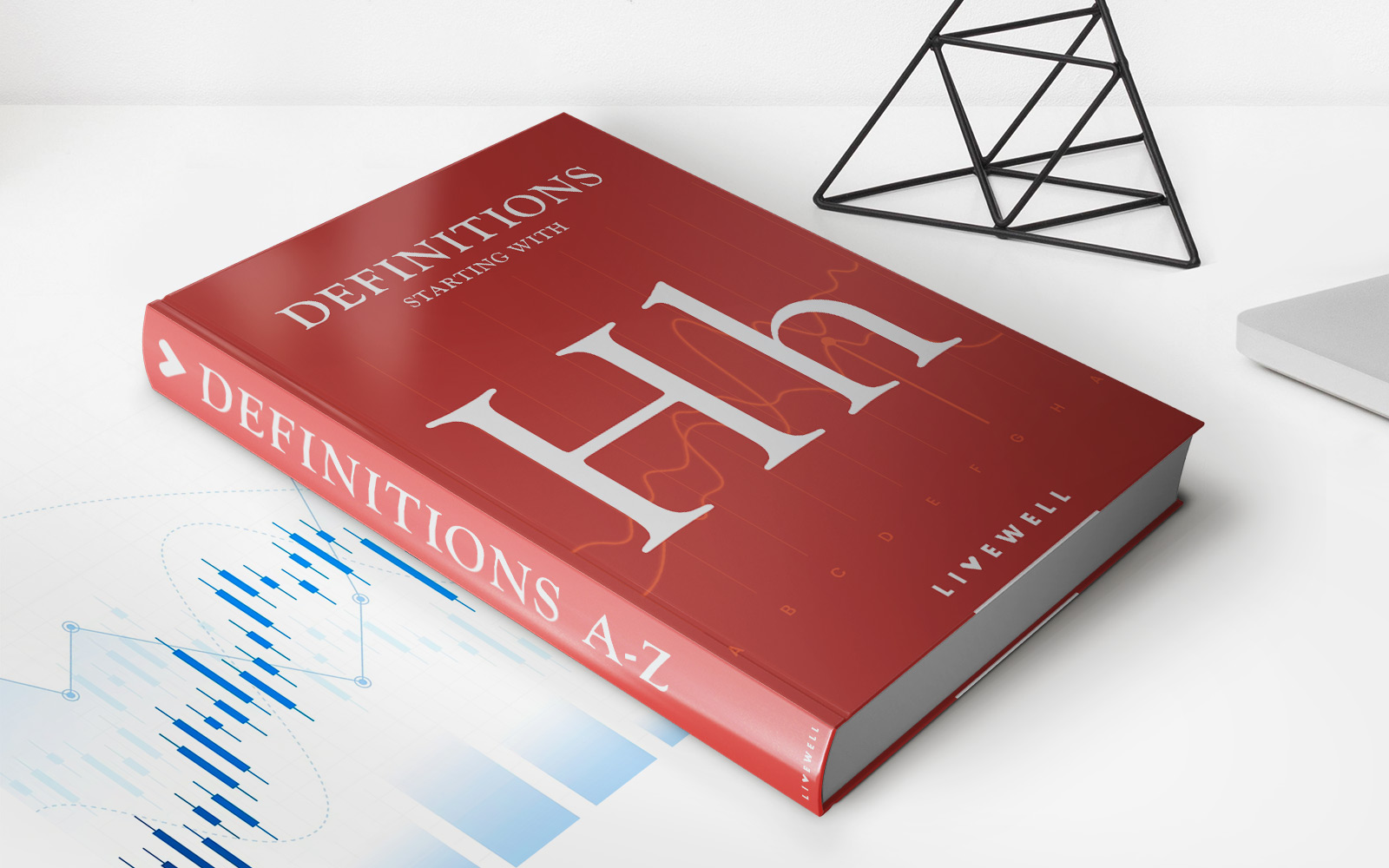

Finance
What Are The Risks Of Certificates Of Deposit
Modified: February 21, 2024
Discover the risks associated with certificates of deposit (CDs) and how they can impact your financial portfolio. Get expert insights on CD investments and find out if they are right for you.
(Many of the links in this article redirect to a specific reviewed product. Your purchase of these products through affiliate links helps to generate commission for LiveWell, at no extra cost. Learn more)
Table of Contents
Introduction
Certificates of Deposit (CDs) are a popular investment option for individuals looking for a low-risk way to grow their money. They offer a fixed interest rate over a specific period of time, making them an attractive choice for those seeking stability and predictability in their investment portfolio.
CDs function as a time deposit offered by banks and credit unions, where the investor agrees to keep the funds deposited for a predetermined period, known as the term of the CD. In return, the financial institution provides a higher interest rate compared to regular savings accounts.
While CDs offer a range of benefits, it is important to be aware of the risks associated with this type of investment. Understanding these risks can help investors make informed decisions and effectively manage their financial goals.
In this article, we will discuss the benefits of investing in CDs, as well as delve into the various risks that investors should consider before committing their funds. By gaining a comprehensive understanding of the risks involved, investors can make informed decisions and mitigate potential financial setbacks.
Definition of Certificates of Deposit (CDs)
Certificates of Deposit (CDs) are financial instruments offered by banks and credit unions as a secure way for individuals to invest and grow their savings. They are considered low-risk investments because they provide fixed interest rates and are insured by the Federal Deposit Insurance Corporation (FDIC) for banks or the National Credit Union Administration (NCUA) for credit unions.
When you invest in a CD, you essentially lend a specific amount of money to the financial institution for a predetermined period, known as the term. The term can range from a few months to several years, and during this time, you agree not to withdraw the funds until the maturity of the CD.
One of the key features of CDs is that they offer a guaranteed rate of return. Unlike other investments where the return can fluctuate based on market conditions, the interest rate on a CD remains constant throughout the term. This makes CDs an attractive option for risk-averse individuals looking for a predictable and stable investment.
The interest earned on CDs is typically higher than what you would receive from a regular savings account. This is because when you choose to invest in a CD, you are agreeing to keep your money locked in for a specific period. The longer the term of the CD, the higher the interest rate offered by the financial institution.
Benefits of Certificates of Deposit
Certificates of Deposit (CDs) offer several benefits that make them an attractive option for individuals looking to grow their savings in a low-risk manner. Let’s explore some of the key advantages of investing in CDs:
- Guaranteed Returns: One of the major benefits of CDs is that they provide a guaranteed rate of return. Unlike other investments such as stocks or mutual funds that are subject to market fluctuations, CDs offer a fixed interest rate throughout the term. This ensures that your principal investment and the interest accumulated will be paid back to you at maturity.
- Low Risk: CDs are considered low-risk investments since they are typically offered by reputable financial institutions and are insured by the FDIC or NCUA. This means that even if the bank or credit union fails, your investment amount (up to the insured limit) is protected. It provides peace of mind to conservative investors seeking a secure investment option.
- Stability and Predictability: With CDs, you know exactly what to expect in terms of the interest earned. The fixed interest rate allows for easy financial planning, as you can calculate the exact amount of interest you will receive over the term of the CD. This stability and predictability make CDs a popular choice for individuals who prioritize a steady and reliable income stream.
- Diversification: CDs can be a valuable component of a diversified investment portfolio. By including CDs along with other investments such as stocks or bonds, you can spread your risk across different asset classes. This diversification strategy can help mitigate the impact of market volatility and provide a more stable overall investment strategy.
- Flexible Term Options: CDs come with a range of term options, allowing investors to choose the duration that best suits their financial goals. Whether you are looking for a short-term investment to meet a specific financial need or a long-term investment to build wealth over time, CDs offer terms that can cater to your specific requirements.
Overall, the benefits of investing in certificates of deposit include the guarantee of a fixed rate of return, low risk, stability and predictability, diversification opportunities, and flexibility in choosing the term. These advantages make CDs an attractive option for individuals looking to preserve capital and earn a reliable income from their investments.
The Risks Associated with Certificates of Deposit
While Certificates of Deposit (CDs) offer several benefits, it’s important to be aware of the risks involved before investing. Understanding these risks can help investors make informed decisions and mitigate potential financial setbacks. Let’s explore some of the key risks associated with CDs:
- Interest Rate Risk: CDs are subject to interest rate risk. If you lock in your funds in a long-term CD with a fixed interest rate and market interest rates rise, you may miss out on the opportunity to earn higher returns on your investment. Conversely, if you lock in a CD and interest rates decrease, you’ll be stuck earning a lower rate of return than the current market offers. Proper timing and understanding the interest rate environment are crucial in mitigating this risk.
- Inflation Risk: Inflation erodes the purchasing power of money over time. While CDs provide a fixed interest rate, they may not keep pace with inflation. If the inflation rate exceeds the interest rate earned on a CD, the real value of your investment can diminish. To hedge against inflation risk, investors may need to consider other investments or strategies that offer higher potential returns.
- Liquidity Risk: CDs have a predetermined term, which means you agree to keep your funds locked in for a specific duration. If you need access to your money before the maturity of the CD, you may face early withdrawal penalties or restrictions on the amount you can withdraw. It’s important to consider your financial needs and ensure that you won’t need the funds before committing to a CD.
- Early Withdrawal Penalties: If you need to withdraw your funds from a CD before its maturity date, you may incur early withdrawal penalties. These penalties can eat into your interest earnings and reduce the overall return on your investment. It’s crucial to understand the terms and conditions surrounding early withdrawals before investing in a CD.
- Credit Risk: While CDs offered by banks are typically insured by the FDIC, there is still a level of credit risk associated with CDs from credit unions or other financial institutions. If the institution issuing the CD faces financial difficulties or fails, there is a possibility of not receiving the full principal investment and interest earned. It’s important to research the financial stability and creditworthiness of the institution before investing in a CD.
By weighing the risks along with the benefits, investors can make informed decisions about incorporating CDs into their investment strategy. It’s crucial to assess your risk tolerance, financial goals, and the current economic climate before investing in CDs. Diversification and a well-balanced portfolio can help mitigate these risks and provide a more robust investment approach.
Interest Rate Risk
Interest rate risk is a significant risk associated with Certificates of Deposit (CDs). When you invest in a CD, you agree to a fixed interest rate for a specific term. However, if interest rates in the market rise during your CD’s term, you may miss out on the opportunity to earn higher returns.
If you have locked your funds into a long-term CD and interest rates increase, newly issued CDs may offer higher interest rates. This can be frustrating as you are stuck earning a lower rate of return than what is available in the current market. This risk is particularly relevant if you have invested in long-term CDs with extended maturities.
On the other hand, if interest rates decrease during your CD’s term, you can benefit from locking in a higher interest rate. This is why timing is essential when investing in CDs. It’s important to assess the interest rate environment and make informed decisions based on your expectations of future rate movements.
To mitigate interest rate risk, some investors adopt a laddering strategy. This strategy involves spreading investments across various CDs with different terms and interest rates. By doing so, you can take advantage of higher interest rates on new CDs as they mature. Laddering also offers the benefit of maintaining liquidity, as a portion of your investment becomes available at regular intervals.
Furthermore, it’s important to consider the duration of the CD you choose. Short-term CDs generally have lower interest rates compared to long-term CDs. This can be advantageous if interest rates are expected to rise in the future, as you can reinvest your funds at higher rates sooner. However, if interest rates are anticipated to decrease, locking in a higher rate with a long-term CD may be more beneficial.
Ultimately, interest rate risk is a crucial factor to consider when investing in CDs. By staying informed about market trends and carefully selecting the duration of your CD, you can better manage this risk and maximize your potential returns.
Inflation Risk
Inflation risk is an important consideration when investing in Certificates of Deposit (CDs). While CDs offer a fixed interest rate, they may not keep pace with inflation, which can erode the purchasing power of your money over time.
When inflation exceeds the interest rate earned on a CD, the real value of your investment decreases. Let’s say you invest in a CD with a 2% interest rate, but the rate of inflation is 3%. In this scenario, your purchasing power decreases as the cost of goods and services outpaces the growth of your investment.
To hedge against inflation risk, it’s important to carefully evaluate the terms of the CD and consider the current inflation rates. If inflation is expected to be high, investing solely in CDs may not be the most effective strategy to preserve the value of your money.
One way to mitigate inflation risk is by diversifying your investment portfolio. Consider allocating a portion of your funds to investments that have the potential to outpace inflation, such as stocks, real estate, or inflation-protected securities. These investments typically offer a higher potential return compared to CDs and can help protect your wealth from the erosive effects of inflation.
Another strategy to manage inflation risk is to invest in CDs with adjustable interest rates, also known as variable-rate CDs. These CDs are tied to an index, such as the Consumer Price Index (CPI), and adjust the interest rate periodically to reflect changes in inflation. Variable-rate CDs offer the advantage of potentially earning a higher return if inflation rises, but they also come with the risk of the interest rate decreasing if inflation remains low.
It’s important to note that while CDs may not be the best tool for combating inflation risk, they do offer stability and certainty in terms of returns. Combining the benefits of CDs with other investments that have the potential to outpace inflation can help create a well-rounded investment strategy.
Overall, investors should carefully evaluate their risk tolerance, financial goals, and the prevailing inflation rates when considering CDs as an investment option. While CDs provide a sense of security, it’s crucial to recognize and address the impact of inflation risk on long-term purchasing power.
Liquidity Risk
Liquidity risk is an important factor to consider when investing in Certificates of Deposit (CDs). CDs are designed as time deposits, meaning that you agree to keep your funds locked in for a specific period, known as the term of the CD. This lack of liquidity can pose challenges if you need access to your funds before the maturity date.
Unlike a regular savings or checking account, where you can withdraw funds at any time, CDs have restrictions on early withdrawals. If you find yourself in a situation where you need immediate access to your invested funds, you may face penalties or limitations on the amount you can withdraw. These penalties are typically in the form of forfeiting a portion of the interest earned or paying a fee.
When investing in CDs, it’s important to carefully assess your financial needs and ensure that you can comfortably meet the duration of the CD term without requiring the funds. If you anticipate the need for liquidity, it may be wise to allocate a portion of your funds to more liquid investments or maintain a separate emergency fund. This way, you can have readily available funds to cover unexpected expenses without having to incur penalties for early withdrawal from a CD.
Another strategy to mitigate liquidity risk is to adopt a CD ladder strategy. With a CD ladder, you invest in CDs with staggered maturity dates. For example, you might invest in multiple CDs with terms of 1 year, 2 years, 3 years, and so on. As each CD matures, you have the option to either reinvest the funds in a new CD with a longer term or access the funds without incurring penalties.
Additionally, some financial institutions offer flexible or no-penalty CDs that allow you to withdraw your funds early without penalties or with reduced penalties. While these options may offer more liquidity, they typically come with lower interest rates compared to traditional CDs with stricter withdrawal rules.
It’s crucial to carefully consider your liquidity needs and balance them with the desire for higher returns when investing in CDs. By having a clear understanding of the liquidity restrictions associated with CDs and planning accordingly, you can effectively manage liquidity risk and make better-informed investment decisions.
Early Withdrawal Penalties
One significant risk associated with Certificates of Deposit (CDs) is the imposition of early withdrawal penalties. When you invest in a CD, you agree to keep your funds locked in for a specific term. If you need to withdraw your funds before the maturity date, you may face penalties imposed by the financial institution.
Early withdrawal penalties are designed to discourage investors from accessing their funds before the agreed-upon term. The penalties can vary depending on the financial institution and the terms of the CD. Typically, the penalty is a percentage of the interest earned or a specified number of months’ worth of interest.
The specific penalty structure for early withdrawal should be disclosed in the terms and conditions of the CD agreement. It’s crucial to review these terms carefully before investing to understand the potential financial impact of early withdrawal.
The purpose of early withdrawal penalties is to compensate the financial institution for the loss of interest income and to discourage investors from constantly shifting their funds in and out of CDs. As a result, these penalties can significantly reduce the overall return on your investment.
However, it’s important to note that not all CDs have the same penalties. Some CDs may have more lenient penalty structures, allowing for limited or no penalties under certain circumstances. For example, some financial institutions offer “no-penalty CDs” that allow for early withdrawal without any financial repercussions.
To mitigate the risk of early withdrawal penalties, it’s important to carefully assess your liquidity needs and ensure that you can comfortably commit to the term of the CD. This requires careful financial planning and consideration of any potential emergencies or unexpected expenses that may arise during the CD term.
Another strategy to manage early withdrawal risk is to diversify your investments and allocate funds across different maturities. With a CD ladder approach, you can invest in multiple CDs with varying terms. This way, if you need access to funds, only a portion of your investment will be subject to penalties, while the rest will continue to earn interest until maturity.
In summary, early withdrawal penalties are a significant risk associated with CDs. Understanding the penalty structure and carefully considering your financial needs and commitment to the CD term can help you avoid or minimize these penalties. Assessing your liquidity requirements and considering alternative investments with more flexible withdrawal options can also mitigate the impact of early withdrawal penalties on your overall financial plan.
Credit Risk
Credit risk is an important factor to consider when investing in Certificates of Deposit (CDs). While CDs offered by banks are typically insured by the Federal Deposit Insurance Corporation (FDIC) for up to $250,000 per depositor, CDs from credit unions or other financial institutions may not have the same level of protection.
When you invest in a CD, you are essentially lending your funds to the issuing institution. Therefore, there is always a possibility of credit risk if the institution faces financial difficulties or, in the worst-case scenario, fails. In such cases, there is a risk that you may not receive the full principal investment and the interest earned on your CD.
Before investing in a CD, it’s crucial to research the financial stability and creditworthiness of the issuing institution. Evaluate the reputation, ratings, and financial health of the institution through resources such as credit rating agencies and financial news publications. Additionally, review the institution’s history and track record to assess its ability to honor its financial obligations.
It’s also important to consider the deposit insurance coverage provided by the FDIC or the National Credit Union Administration (NCUA). These agencies provide a safety net for deposits held at insured banks and credit unions. Ensure that the institution issuing the CD is a member of the FDIC or NCUA and that your investment falls within the insured limit.
One way to further mitigate credit risk is to diversify your CD investments across various institutions. By spreading your investments across multiple issuers, you reduce your exposure to the credit risk of any single institution. The FDIC and NCUA insurance coverage limit applies to each individual institution, so diversifying your CDs can provide added protection.
Monitoring the financial health of the issuing institution during the term of the CD is also crucial. Stay informed about any significant changes in the institution’s financial performance or any news that may indicate a potential risk. Regularly review your CD portfolio and evaluate the creditworthiness of the institutions to ensure your funds are secure.
Investing in CDs offered by reputable and financially stable institutions can help mitigate credit risk. Conducting thorough research, diversifying your investments, and monitoring the performance of the issuing institutions are key steps to managing this risk and safeguarding your investment.
It’s important to note that credit risk in CDs is generally lower compared to other forms of debt investments since CDs are secured by the issuing institution. However, it’s still important to evaluate creditworthiness and take necessary precautions to protect your investment.
Conclusion
Certificates of Deposit (CDs) offer a range of benefits, making them an attractive investment option for individuals seeking stability and predictable returns. They provide a guaranteed rate of return, low-risk investment, stability, and diversification opportunities. However, it is essential to consider the risks associated with CDs to make informed decisions and avoid potential pitfalls.
Interest rate risk is a significant risk to consider. Timing your CD investments in relation to interest rate movements can help maximize your returns. Inflation risk can erode the purchasing power of your investment over time, highlighting the importance of diversifying your portfolio and considering investments that offer potential inflation-beating returns.
Liquidity risk and early withdrawal penalties should be evaluated based on your financial needs. Proper planning and understanding the terms of the CD can help avoid penalties and ensure adequate liquidity. Lastly, credit risk should be assessed by conducting thorough research on the financial stability and creditworthiness of the issuing institution, and diversification across multiple issuers can provide added protection.
Despite the risks, CDs remain a viable investment option, particularly for risk-averse individuals seeking stability and predictability. By understanding the risks and incorporating CDs strategically within a diversified investment portfolio, one can achieve a balance between security and potential returns.
Ultimately, investors should carefully consider their financial goals, risk tolerance, and the prevailing market conditions when deciding to invest in CDs. It’s important to conduct thorough research, review terms and conditions, and consult with a financial advisor if needed.
With proper planning, diligent monitoring, and a comprehensive understanding of the benefits and risks, Certificates of Deposit can be a valuable tool for individuals looking to grow their savings while minimizing risk in their investment strategy.
